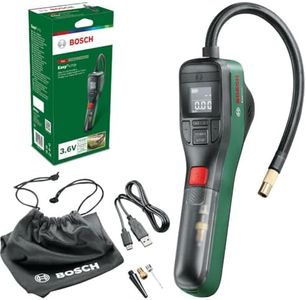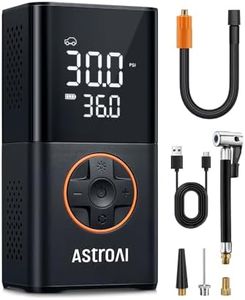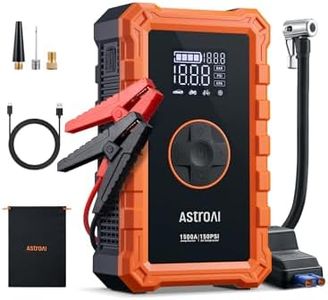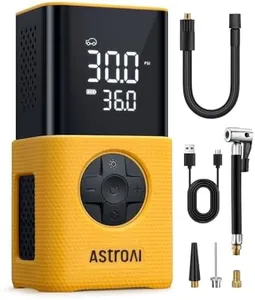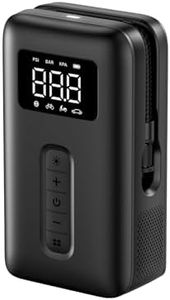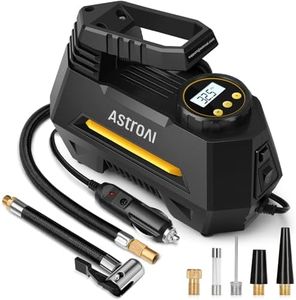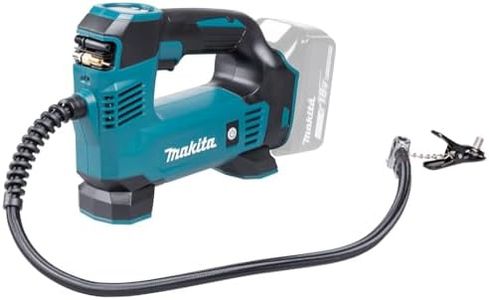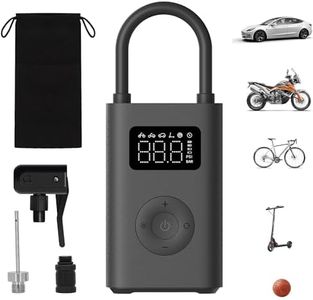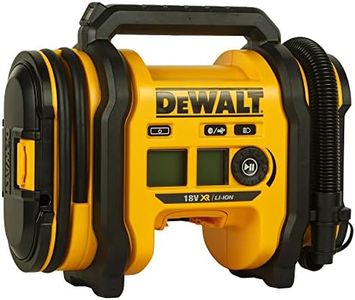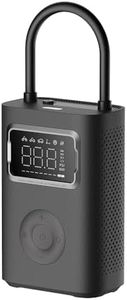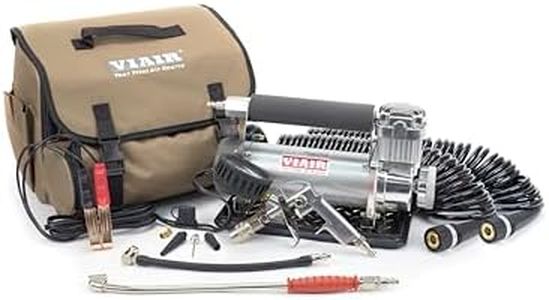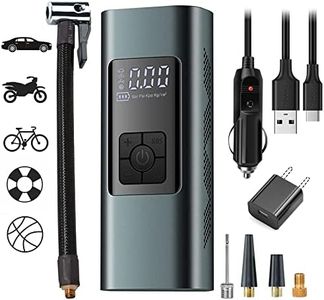We Use CookiesWe use cookies to enhance the security, performance,
functionality and for analytical and promotional activities. By continuing to browse this site you
are agreeing to our privacy policy
10 Best Portable Air Inflator
From leading brands and best sellers available on the web.Buying Guide for the Best Portable Air Inflator
Choosing the right portable air inflator can make a big difference, whether you're keeping your car tires properly inflated or making sure your bicycle, sports equipment, or inflatable pool toys are always ready to use. The best approach is to first think about what you’re mostly going to use it for—and in what situations. For example, consider if you'll keep it in the car for emergencies, use it at home, or carry it while cycling. Understanding your main use will help you focus on what really matters among the many features and specifications available.Maximum PSIPSI stands for pounds per square inch, which measures the maximum air pressure the inflator can deliver. This is important because different inflatables require different pressure levels. Lightweight uses like sports balls or bicycle tires need less PSI, while car tires need more. Generally, for most car and bike uses, a maximum PSI between 100 and 150 is sufficient. If you want a versatile inflator that can handle things from pool floats up to car tires, aim for a higher range. However, if you’re only inflating low-pressure items, a lower maximum PSI can be just fine.
Air Flow Rate (CFM or L/min)This specifies how much air the inflator can move per minute, usually given in cubic feet per minute (CFM) or liters per minute (L/min). Why does this matter? It determines how quickly your item will inflate. A higher value means faster inflation times, which is especially useful for filling car tires or larger inflatables. Small and infrequent jobs can get by with less, but if you value speed or foresee regular use, go for models with a higher air flow rate.
Power SourcePortable air inflators can be powered in different ways, including by your car’s 12V outlet, regular wall plugs (AC), built-in rechargeable batteries, or even manual pumps. This matters because it affects where and how you can use the device. For emergencies on the road, a 12V car plug is very handy, but at home, you might prefer AC or battery options. Think about where you’ll use it most often—you may want a model with multiple options for maximum flexibility.
Size and WeightThis refers to the physical dimensions and heft of the inflator. These traits are important if you need portability—like keeping the inflator in your car or carrying it in a backpack while biking. Smaller and lighter models are easier to transport but may offer less power or air flow. If portability is crucial, pick a compact inflator. If storage space and carrying weight don’t matter as much, larger inflators can give you more features or capacity.
Automatic Shut-OffThis safety and convenience feature allows the inflator to stop automatically once the desired pressure is reached. It prevents over-inflation, saves time, and gives you peace of mind. If you want easy, accurate results with no guesswork, consider inflators with this feature. If you're okay with manual monitoring or only dealing with small inflatables, you may not need it, but most users find it very helpful.
Display and ControlsMost modern inflators have some kind of pressure gauge or digital display. This helps you know the exact pressure you're inflating to. A digital display is typically easier to read and more precise than an analog one. Some also let you set the desired pressure before starting inflation. If you’re interested in accuracy and convenience, look for a clear and user-friendly display.
Included AttachmentsAttachable nozzles and adapters make the inflator more versatile—you can fill things like tires, sports balls, air mattresses, and toys. The more attachments included, the more uses the inflator has. If you expect to use your inflator for a variety of items, make sure it comes with the appropriate nozzles. For single-use applications, like just car tires, fewer attachments may be needed.

